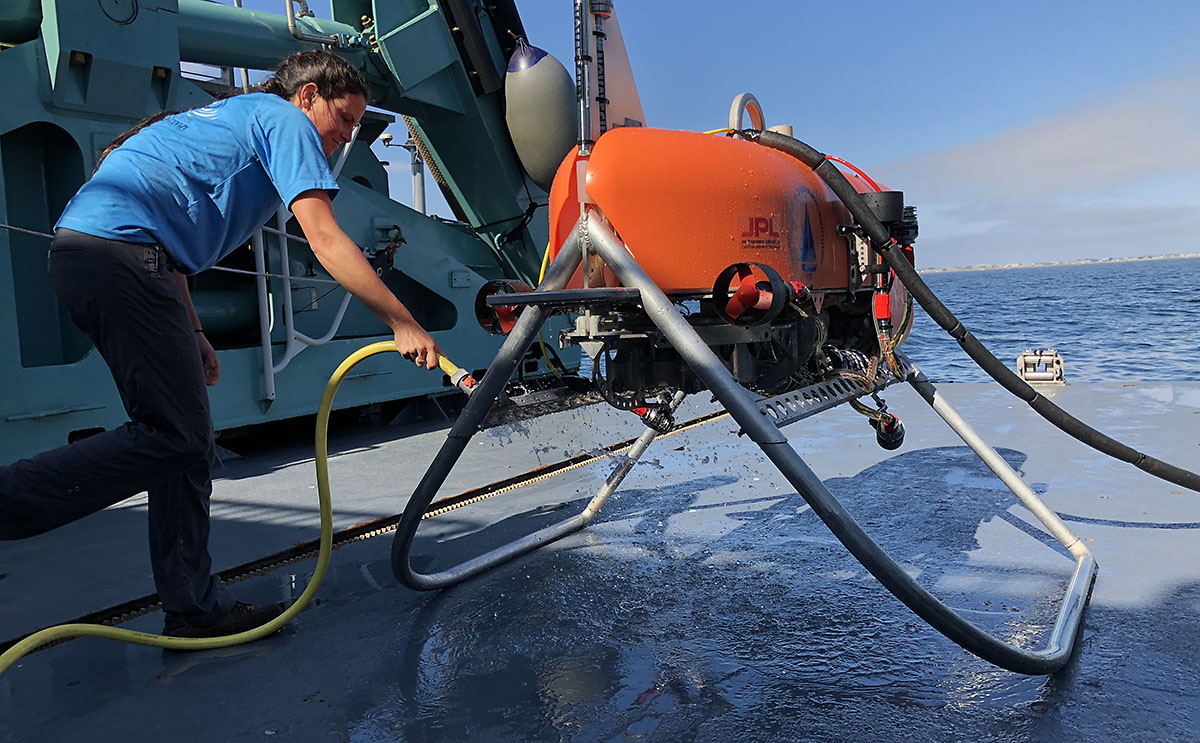The Orpheus submersible robot is being developed by Woods Hole Oceanographic Institute and JPL to explore the deep ocean autonomously. Orpheus uses vision-based navigation that works in a similar way to how the Ingenuity Mars Helicopter navigates during flight. (NASA/JPL-Caltech)
Home The Orpheus submersible robot is being developed by Woods Hole Oceanographic Institute and JPL to explore the deep ocean autonomously. Orpheus uses vision-based navigation that works in a similar way to how the Ingenuity Mars Helicopter navigates during flight. (NASA/JPL-Caltech) The Orpheus submersible robot is being developed by Woods Hole Oceanographic Institute and JPL to explore the deep ocean autonomously. Orpheus uses vision-based navigation that works in a similar way to how the Ingenuity Mars Helicopter navigates during flight. (NASA/JPL-Caltech)



